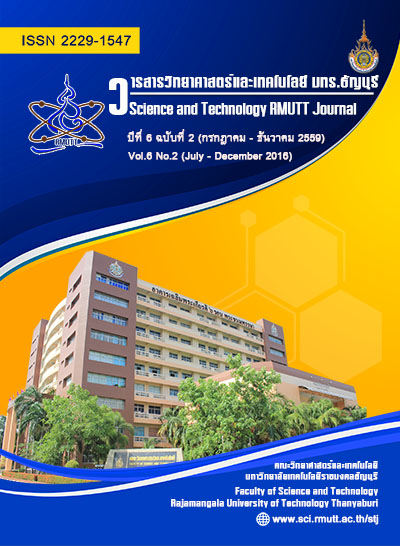ASSOCIATION RULE MINING APPROACHES FOR SALE TRANSACTION USING FP-GROWTH
Main Article Content
Abstract
The purpose of this research is to find the possible causal relationship between each of the large supermarkets’ sale transactions. The obtained data of a number of each individual customer purchase transactions is analyzed, item by item, according to “Association Rules” using “FP-Growth” technique.
The research’s result has shown the capability of forecasting the customers’ demand which can be regulated into 11 rules with reliability coefficient of 83%. Such result can be implemented to the decisions making about offering products which would meet the customers’ individual demand and, therefore; earning
the customers’ satisfaction as one to the appropriate and effective marketing strategies.
Article Details
References
ปัณฑารีย์ ปริยภารัตน์. ระบบสนับสนุนการตัดสินใจเพื่อการการวางแผนการจัดโปรโมชันทางการตลาด สำหรับอาหารฟาสฟู้ดโดยใช้กฎความสัมพันธ์ กรณีศึกษา: ร้านอาหารเคเอฟซี. ปัญหาพิเศษปริญญาโท วิทยาศาสตรมหาบัณฑิต, มหาวิทยาลัยเทคโนโลยีพระจอมเกล้าพระนครเหนือ. (2554).
ศิริพันธ์ เทพมาก. ระบบหาความสัมพันธ์ของการซื้อสินค้าโดยใช้เทคนิคกฎความสัมพันธ์ กรณีศึกษาสินค้าเครื่องสำอาง. ปัญหาพิเศษปริญญาโท วิทยาศาสตรมหาบัณฑิต, มหาวิทยาลัยเทคโนโลยีพระจอมเกล้าพระนครเหนือ. (2554).
เอมอมร ปินปันคง. การพยากรณ์ความต้องการสินค้าอุปโภคและบริโภคโดยใช้ เทคนิคกฎการวิเคราะห์ความสัมพันธ์. ปัญหาพิเศษปริญญาโทวิทยาศาสตรมหาบัณฑิต, มหาวิทยาลัยเทคโนโลยีพระจอมเกล้าพระนครเหนือ. (2554).
เอกสิทธิ์ พัชรวงศ์ศักดา. Introduction to Business Analytics With RapidMiner Studio 6. เอเชีย ดิจิตอลการพิมพ์. (2558).
Han, J., et al. “Data mining concepts and techniques (2nd ed.).” United States of America: Morgan Kaufman Publishers. (2006).
Han, J.,Pei, J., and Yin, Y. “Mining Frequent Patterns without Candidate Generation.” In proceeding of the 2000 ACM SIGMOD. (2000).
Karthikeyan, T., & Ravikumar, N.A “Survey on Association Rule Mining.” International Journal of Advanced Research in Computer and Communication Engineering, 3(1), (2014): 5224-5226.
Narvekar, M., and Shafaque Fatma Syed “An Optimized Algorithm for Association Rule Mining Using FP Tree” International Conference
on Advanced Computing Technologies and Applications. (2015).
Suresh, J., Rushyanth, P., & Trinath, Ch. “Generating associations rule mining using Apriori and FPGrowth Algorithms.” International Journal of Computer Trends and Technology (IJCTT), 4(4), (2013): 890-891.
S. O. Abdulsalam, K. S. Adewole, A. G. Akintola, M. A. Hambali “Data Mining in Market Basket Transaction: An Association Rule Mining Approach” International Journal of Applied Information Systems,7(10):15-20, (2014).


